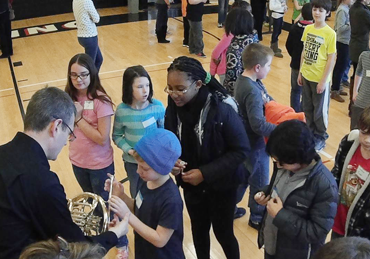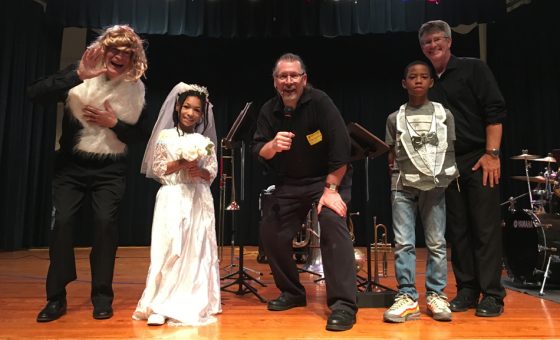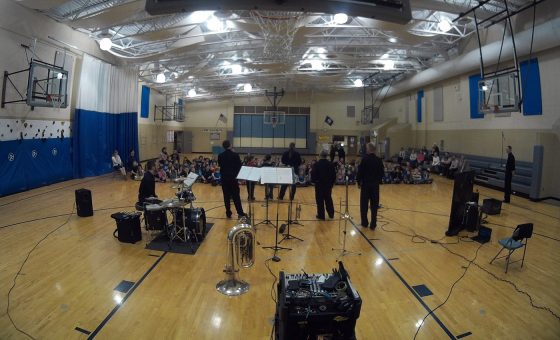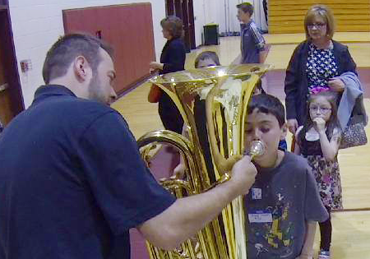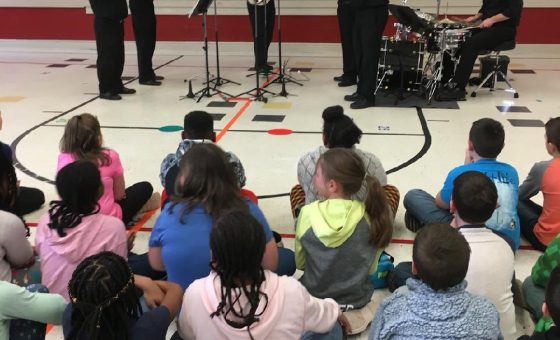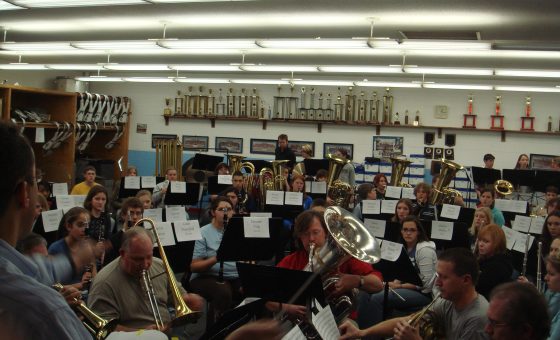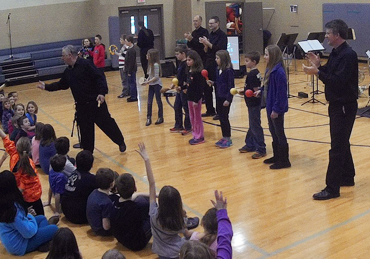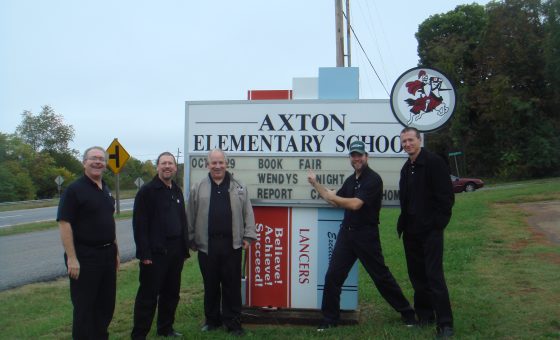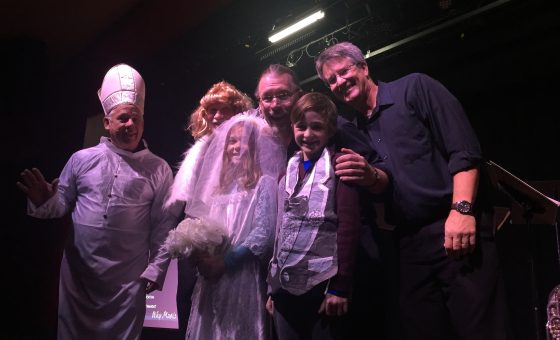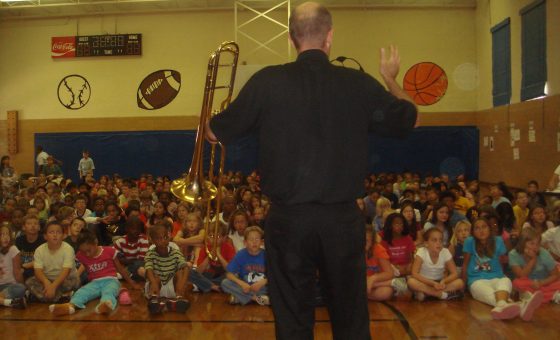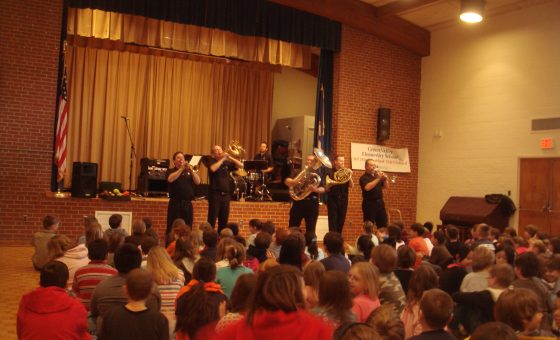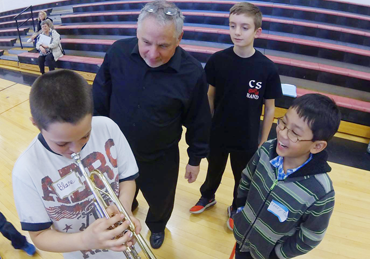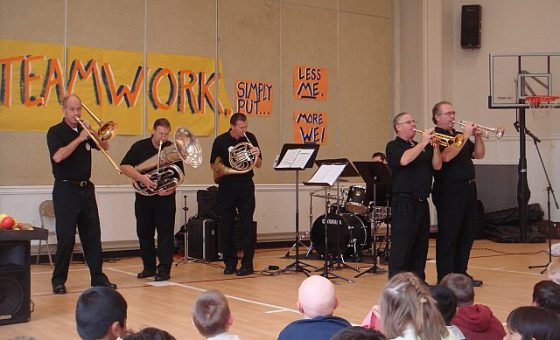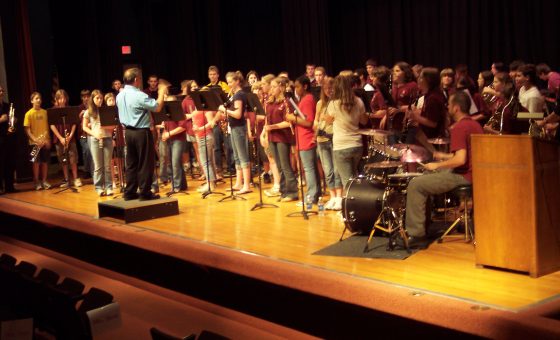Education Programs
With over 3,000 educational performances under their belts, Brass 5 knows how to reach young audiences. Their programs are both entertaining and informative. Brass 5 has performed for over a half a million students in the eastern United States and Europe. Brass 5 designs all their educational programs in line to meet Virginia’s SOL objectives.
Brass 5 develops and presents a new educational program each year for the pre-K through 12th grade levels. Utilizing the public-school teaching experience of its members, Brass 5 relates the material to the specific grade level’s curriculum in a fun format that has become the ensemble’s educational signature. In addition, their programs can be utilized by the music teachers in the classroom.
Current Programs
“Why Music”
This program is geared toward Pre-K ~ 5th grade.
Brass 5 is currently touring this wildly acclaimed program. Through the years, this has become not just our youngest audience’s favorite program, but ours as well. In this program, we explore the importance of music and how it plays a role in our everyday lives. Music surrounds us in communication, ceremonial events, education, and entertainment. How do all these elements work together to make music a must in our everyday lives? With lots of skits, laughter, and music, this is a sure crowd-pleaser for all.
“Roots”
This program is tailored for 6~12 grade.
Other Programs
Science of Sound
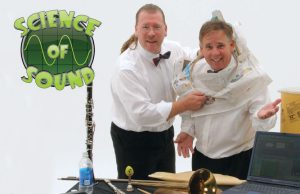
Brass 5 also offers a special Science of Sound Unit based on Virginia 5th grade Science SOLs. In this 90 minute in-class program, students will have the opportunity to explore the elements and characteristics of sound and sound energy with two members of the Brass 5 team. They’ll learn new vocabulary and concepts of the elements of sound, promoting a general understanding with practical applications. They will see first-hand how an oscilloscope and decibel meter work – tools that are not usually available to classrooms. Students will receive a variety of materials to demonstrate the properties of sound that are discussed. They will see instruments from each of the four families of instruments made to show how the physical properties of the materials work in conjunction with the basic characteristics of sound. Some of the vocabulary and concepts covered are: energy, sound wave, amplitude, wavelength, decibel, frequency and oscilloscope.



